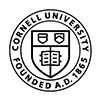Rotator Cuff
Return to Work and Sports After Lower Trapezius Tendon Transfer for Posterosuperior Irreparable Rotator Cuff Tears
Background: Lower trapezius tendon (LTT) transfer has demonstrated promising results for patients with posterosuperior irreparable rotator cuff tears (PSIRCTs). However, there has been no study evaluating return to work (RTW) and return to sports (RTS) after LTT transfer.
Superior Capsular Reconstruction Versus Middle Trapezius Tendon Transfer for Isolated Irreparable Supraspinatus Tendon Tears
Background: Both superior capsular reconstruction (SCR) and middle trapezius tendon (MTT) transfer can be performed in non- arthritic young and active patients with isolated irreparable supraspinatus tendon tears (IISTTs). However, to our knowledge, no comparative clinical studies have been conducted on these procedures.
Acellular Dermal Matrix Augmentation of Arthroscopic Rotator Cuff Repair Reduces Re-Tear Rates: A Meta-Analysis of Randomized Control Trials
Purpose: The purpose of this study was to perform a meta-analysis of randomized controlled trials (RCTs) to compare the outcomes of arthroscopic rotator cuff repair (ARCR) with and without Acellular Dermal Matrix (ADM) augmentation.
Superior Capsular Reconstruction Versus Lower Trapezius Transfer for Posterosuperior Irreparable Rotator Cuff Tears With High-Grade Fatty Infiltration in the Infraspinatus
Background: Superior capsular reconstruction (SCR) and lower trapezius transfer (LTT) have recently been utilized to treat irreparable rotator cuff tears (IRCTs). There is still no clear guideline on which treatment method is a better fit for posterosuperior IRCTs with high-grade 4 fatty infiltration in the infraspinatus.
'Prospective 1 Year Outcomes are Maintained at Short-Term Final Follow-up after Superior Capsular Reconstruction Augmentation of Complete Rotator Cuff Repair
Objective: To evaluate the outcomes of arthroscopic superior capsular reconstruction (SCR) augmentation of complete, massive rotator cuff repair (RCR).
PROSPECTIVE, RANDOMIZED EVALUATION of LATISSIMUS DORSI TRANSFER and SUPERIOR CAPSULAR RECONSTRUCTION in MASSIVE, IRREPARABLE ROTATOR CUFF TEARS
Background: The treatment of massive, irreparable rotator cuff tears remains controversial today since there is no consensus on the ideal treatment option. This investigation aimed to prospectively evaluate and compare the outcomes of arthroscopic-assisted latissimus dorsi transfer and superior capsular reconstruction in treatment of massive, irreparable rotator cuff tears.
Supraspinatus repair and biceps tenodesis in competitive CrossFit athletes allow for a 100% of return to sport
Purpose: The shoulder is the most commonly injured body part in CrossFit training. The aim of this study is to report the clinical and MRI results of an arthroscopic repair of supraspinatus tear associated with SLAP lesion in competitive CrossFit athletes.
Risk factors for symptomatic retears after arthroscopic repair of full-thickness rotator cuff tears
BACKGROUND: Factors affecting a rotator cuff symptomatic retear after arthroscopic repair have yet to be clearly identified, since they usually influence the surgical decisions.
High Rate of Return to CrossFit Training After Arthroscopic Management of Rotator Cuff Tear.
BACKGROUND: CrossFit is a conditioning program involving high-intensity exercises performed in rapid, successive repetitions with limited or no recovery time. The shoulder girdle is highly involved in most basic CrossFit training programs.
Medium-term outcomes of a cohort of revision rotator cuff repairs.
BACKGROUND: There are limited medium- and long-term studies investigating clinical outcomes following revision rotator cuff surgery. The aim of the current study was to analyze the medium-term pain and functional outcomes of a cohort of revision rotator cuff repairs.
Clinical midterm results of arthroscopic rotator cuff repair in patients older than 75 years.
BACKGROUND: The effect of patient age on functional improvement after arthroscopic rotator cuff repair (ARCR) is still a matter of debate. The purpose of this study was to evaluate the clinical midterm results after ARCR in patients who were 75 years or older at the time of surgery.
Shoulder stiffness after rotator cuff repair: the fate of stiff shoulders up to 9 years after rotator cuff repair.
BACKGROUND: Stiffness and retear are 2 common complications of rotator cuff repair. McNamara et al found that postoperative stiffness was associated with lower retear rates at 6 months. This study aimed to determine if stiffness after rotator cuff repair protects the individual from retear up to 9 years after surgery.
Return to Sport and Outcomes After Concomitant Lateral Meniscal Allograft Transplant and Distal Femoral Varus Osteotomy
Purpose: To evaluate the time and rate of return to sport (RTS), as well as outcomes, in young and active patients receiving concomitant lateral meniscal allograft transplantation (MAT) and distal femoral varus osteotomy (DFVO) for lateral meniscal deficiency and valgus malalignment
Ultrasound Assessment of the Superior Capsular Reconstruction With Dermal Allograft: An Evaluation of Graft Thickness and Vascularity
Purpose: To assess postoperative changes in the thickness of the dermal allograft of the superior capsular reconstruction (SCR) and to evaluate the graft for the presence of intrasubstance pulsatile vessels
Clinical and Imaging Outcomes after Arthroscopic Superior Capsule Reconstruction with Human Dermal Allograft for Irreparable Posterosuperior Rotator Cuff Tears: A Minimum Two Year Follow Up.
PURPOSE: To report clinical and structural outcomes for non-pseudoparalytic irreparable posterosuperior rotator cuff tears(RCT) treated with superior capsule reconstruction(SCR) using dermal allograft(DA).
Superior Capsular Reconstruction for the Operatively Irreparable Rotator Cuff Tear: Clinical Outcomes Are Maintained 2 Years After Surgery.
PURPOSE: To evaluate the results of arthroscopic superior capsular reconstruction (SCR) after 2-year minimum follow-up and to compare the results with those seen in a previously studied group of patients at 1 year postoperatively.
Adverse impact of corticosteroid injection on rotator cuff tendon health and repair: A systematic review.
PURPOSE: To assess adverse effects of pre-operative corticosteroid injections (CSIs) in patients with rotator cuff disease, especially prior to rotator cuff repair (RCR).
Anterior Capsule Reconstruction Versus Pectoralis Major Transfer for Irreparable Subscapularis Tears Involving the Anterior Capsule: A Comparative Biomechanical Cadaveric Study.
PURPOSE: To compare the biomechanical effectiveness of human dermal allograft (HDA) anterior capsular reconstruction (ACR) and pectoralis major tendon transfer (PMTT) for treating irreparable subscapularis tears with capsular insufficiency in human cadaver shoulders.
Five-Year Follow-up of Arthroscopic Superior Capsule Reconstruction for Irreparable Rotator Cuff Tears.
Background: Arthroscopic superior capsule reconstruction was developed to restore superior stability, muscle balance, and function in the shoulder joint after an irreparable rotator cuff tear. Our objective was to assess the functional and radiographic results of superior capsule reconstruction after 5 years of follow-up.
Repair of Rotator Cuff Tears in the Elderly: Does It Make Sense? A Systematic Review.
Purpose: The purpose of this study was to systematically review the literature on the outcomes of RCR among patients ≥70 years old.
Superior Capsular Reconstruction for Massive Rotator Cuff Tear Leads to Significant Improvement in Range of Motion and Clinical Outcomes: A Systematic Review.
Purpose: To determine if arthroscopic superior capsular reconstruction for massive irreparable rotator cuff tears results in statistically significant and clinically significant improvement in patient-reported outcomes and shoulder range of motion with low graft failure, complication, and reoperation rates.
Clinical and MRI Outcomes 10 Years After Repair of Massive Posterosuperior Rotator Cuff Tears.
Background: Massive rotator cuff tears are challenging to treat, with few or no studies on long-term outcomes of repair. The purpose of this study was to report 10-year outcomes following repair of massive posterosuperior rotator cuff tears, with and without extension into the subscapularis, and to determine prognostic factors that could influence clinical scores and retear rates.
Superior Capsular Reconstruction Reverses Profound Pseudoparalysis in Patients With Irreparable Rotator Cuff Tears and Minimal or No Glenohumeral Arthritis.
Purpose: The purpose of the study was to investigate the rate and magnitude of return of active forward elevation (aFE) of the arm for patients with severe preoperative elevation dysfunction (less than 45° of aFE and termed profound pseudoparalysis) and massive, irreparable (or partially reparable) rotator cuff tears without arthritis treated with arthroscopic superior capsular reconstruction (SCR).
Rotator cuff tear with early osteoarthritis: how does it affect clinical outcome after large to massive rotator cuff repair?
Background: Rotator cuff tear and glenohumeral osteoarthritis are 2 common diseases, but there are few studies about their clinical correlation. The purpose of this study was to evaluate the influence of mild glenohumeral osteoarthritis on the clinical outcome after large to massive rotator cuff repair.
No Functional Difference Between Three and Six Weeks of Immobilization After Arthroscopic Rotator Cuff Repair: A Prospective Randomized Controlled Non-Inferiority Trial.
Purpose:The aim of this study was to compare clinical and radiologic results among patients with 3 versus 6 weeks of immobilization after arthroscopic rotator cuff (RC) repair in a prospective randomized controlled non-inferiority trial.
Higher Critical Shoulder Angle and Acromion Index Are Associated With Increased Retear Risk After Isolated Supraspinatus Tendon Repair at Short-Term Follow Up.
Purpose:To evaluate the effect of critical shoulder angle (CSA), acromion index (AI), and glenoid inclination (GI) on the postoperative healing rate after arthroscopic supraspinatus tendon repair.
Increasing the deltoid muscle volume positively affects functional outcomes after arthroscopic rotator cuff repair.
Purpose: The aim of this study was to determine the effect of changes in deltoid muscle volume (DMV) on the clinical outcomes of patients who underwent arthroscopic repair due to chronic rotator cuff rupture.
Arthroscopic Superior Capsule Reconstruction Can Eliminate Pseudoparalysis in Patients With Irreparable Rotator Cuff Tears.
Background: Patients with pseudoparalysis and irreparable rotator cuff tears have very poor function. The authors developed a superior capsule reconstruction (SCR) technique for irreparable rotator cuff tears that restores shoulder stability and muscle balance, improving shoulder function and relieving pain.
Immediate physical therapy without postoperative restrictions following open subpectoral biceps tenodesis: low failure rates and improved outcomes at a minimum 2-year follow-up.
HYPOTHESIS: We aimed to determine patient-reported outcomes in patients undergoing open subpectoral biceps tenodesis with a dual-fixation construct who had no postoperative range-of-motion or weight-bearing restrictions. Our hypothesis was that patients without postoperative restrictions would have low failure rates with improved patient-reported outcomes. We further hypothesized that this technique would allow an earlier return to activity and similar functional outcomes when compared with those reported in the literature.
Structural Evolution of Nonoperatively Treated High-Grade Partial-Thickness Tears of the Supraspinatus Tendon
Background:High-grade partial-thickness rotator cuff tears (hPTRCTs) are frequently encountered in the shoulder. However, little information is available on the prevalence or timing of tear progression.
Arthroscopic Superior Capsular Reconstruction With Acellular Dermal Allograft for the Treatment of Massive Irreparable Rotator Cuff Tears: Short-Term Clinical Outcomes and the Radiographic Parameter of Superior Capsular Distance
Purpose: This outcome analysis presents 88 consecutive shoulders presenting with irreparable rotator cuff tears that we treated with arthroscopic superior capsular reconstruction (SCR) using an acellular dermal allograft.


















